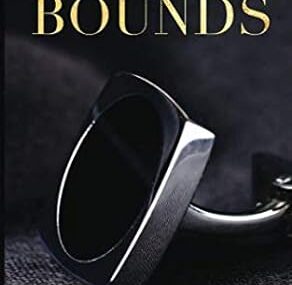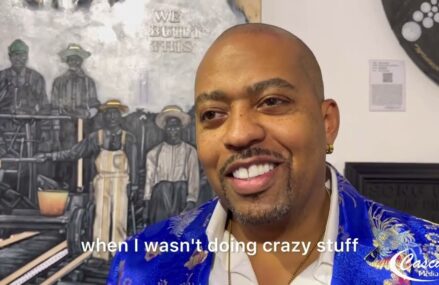By early 1957, Davis was exhausted from recording and touring with his quintet and wished to pursue new projects. During a two-week residency in Chicago in March, the 30-year-old Davis told journalists of his intention to retire at its conclusion and revealed offers he had received to become a teacher at Harvard University and a musical director at a record label.[93][94] Avakian agreed that it was time for Davis to explore something different, but Davis rejected his suggestion of returning to his nonet as he considered that a step backward.[94] Avakian then suggested that he work with a bigger ensemble, similar to Music for Brass (1957), an album of orchestral and brass-arranged music led by Gunther Schuller featuring Davis as a guest soloist.
Davis accepted and worked with Gil Evans in what became a five-album collaboration from 1957 to 1962.[95] Miles Ahead (1957) showcased Davis playing the flugelhorn and a rendition “The Maids of Cadiz” by Léo Delibes, the first piece of classical music that Davis recorded. Evans devised orchestral passages as transitions, thus turning the album into one long piece of music.[96][97] Porgy and Bess (1959) include arrangements of pieces from George Gershwin’s opera. Sketches of Spain (1960) contained music by composers Joaquín Rodrigo and Manuel de Falla and originals by Evans. The classical musicians had trouble improvising, while the jazz musicians couldn’t handle the difficult arrangements, but the album was a critical success, selling over 120,000 copies in the US.[98] Davis performed with an orchestra conducted by Evans at Carnegie Hall in May 1961 to raise money for charity.[99] The pair’s final album was Quiet Nights (1962), a collection of bossa nova songs released against their wishes. Evans stated it was only half an album and blamed the record company; Davis blamed producer Teo Macero and refused to speak to him for more than two years.[100] Davis noted later that “my best friend is Gil Evans”;[101] their work was included in the box set Miles Davis & Gil Evans: The Complete Columbia Studio Recordings (1996), which won a Grammy Award for Best Historical Album and Best Album Notes in 1997.
In March and April 1959, Davis recorded what many critics consider his greatest album, Kind of Blue (1959). He named the album for its mood.[102] He called back Bill Evans, as the music had been planned around Evans’s piano style.[103] Both Davis and Evans were familiar with George Russell’s ideas about modal jazz.[104][105] But Davis neglected to tell pianist Wynton Kelly that Evans was returning, so Kelly appeared on only one song, “Freddie Freeloader”. [103] The sextet had played “So What” and “All Blues” at performances, but the remaining three compositions they saw for the first time in the studio.
Released in August 1959, Kind of Blue was an instant success, with widespread radio airplay and rave reviews from critics.[102] It remains the best selling jazz album of all time. In October 2008, the album reached 4× platinum certification from the Recording Industry Association of America for selling over four million copies in the US alone.[106] In 2009, the US House of Representatives voted 409–0 to pass a resolution that honored it as a national treasure.[107][108]
During the success of Kind of Blue, Davis found himself involved with the law. On August 25, 1959, during a recording session at the Birdland nightclub in New York City for the US Armed Services, he took a break outside the club. As he was escorting a blonde-haired woman to a taxi, policeman Gerald Kilduff told him to “move on”.[109][110] Davis said that he was working at the club, and he refused to move.[111] Kilduff arrested him and grabbed him as he tried to protect himself.[110] Witnesses said the policeman punched Davis in the stomach with a nightstick without provocation.[110] Two detectives held the crowd back, while a third approached Davis from behind and beat him in the head. Davis was taken to jail, charged with assaulting an officer, then taken to the hospital where he received five stitches.[110] He was released on a $525 bail (US$4,605 in 2019 dollars[65]).[112] By January 1960, he was acquitted of disorderly conduct and third-degree assault.[90] He later stated the incident “changed my whole life and whole attitude again, made me feel bitter and cynical again when I was starting to feel good about the things that had changed in this country”.[90]
Davis and his sextet toured to support Kind of Blue.[102] He persuaded Coltrane to play with the group on one final European tour in the spring of 1960. Coltrane then departed to form his quartet, though he returned for some tracks on Davis’s album Someday My Prince Will Come (1961). Its front cover shows a photograph of his wife, Frances Taylor after Davis demanded that Columbia depict black women on his album covers.[113] In 1957,[114] Davis began a relationship with Frances Taylor, a dancer he had met in 1953 at Ciro’s in Los Angeles.[115][116] They married on December 21, 1959, in Toledo, Ohio.[117] The relationship involved numerous incidents of Davis’ domestic violence towards Taylor. He later wrote, “Every time I hit her, I felt bad because a lot of it really wasn’t her fault but had to do with me being temperamental and jealous.”[118][119][120] One reason for his behavior was that in 1963 he had increased his use of alcohol and cocaine to reduce joint pain caused by sickle cell anemia.[121][122] He hallucinated, “looking for this imaginary person” in his house while wielding a kitchen knife. Soon after the photograph for the album E.S.P. (1965) was taken, Taylor left him for the final time.[123] She filed for divorce in 1966; it was finalized in February 1968.[124][125] Davis later recalled that “Frances was the best wife I ever had and I made a mistake when I broke up with her.”[126]



